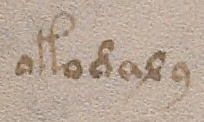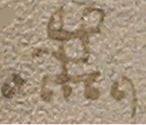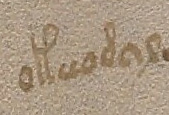The Voynich Manuscript’s Star Folios. Part III The decoding of the hieroglyphs in the star section of f.68r1
Abstract: The decoded hieroglyphs from the Voynich Manuscript’s f.68r1 star section describe the Sun, a gold blazing star, providing a path round which the Earth, while turning on its axis, revolves in a slow circular dance. A warning is given to keep these ideas hidden and not to reveal them.
‘For every action there is an opposite and equal reaction’
— This is a modified quote by Leonardo da Vinci, it is also Isaac Newton’s Third Law of Motion.
Introduction: This article is a continuation of Part 2, which discusses the stars of the Little Dipper, appearing to turn around the North Star, due to the Earth rotating and revolving causing the seasons to change. Part 2 continues to debunk the geocentric model of the solar system by suggesting that the Earth revolves around the Sun.

The decoded words around the faces of the Sun and Moon and those among the stars in f.68r1 (Figure 1) are as follows:
- f.68r1 Sun: for the air and for the location.
- f.68r1 Stars: Abolish greatly known and aid to the throng the Earth now as a wheel in that place with the Sun the gold blazing star the roundelay turning round the nave of a wheel the fair Earth by wind in or whirl about well to that purpose it is a spinning wheel a roundelay a narrow path of a way of a body roundelay round a circle about a star Sun’s path I pray you for God’s sake with holding of ones assent a revelation of secret things and alas to what end ninnihammer. (see Figure 1)
- f.68r1 Moon: In regard other the divine service of God from righteous challenge or jest.
The transcription, decoding and translation of the 28 hieroglyphs among the stars is in the appendix.
Discussion: The decoded words from around the faces of the Moon and Sun were discussed in an earlier article.(i) We now know what ‘other’ in the words round the Moon refers to. In the 15th century the church believed that the Sun, Moon, planets and stars revolved on eight separate orbits around a stationary Earth, the geocentric model of the universe. The decoded hieroglyphs, scattered among the stars in this folio, by proposing that the Earth orbits the Sun, threaten the Roman Church’s doctrine.
The words among the stars were translated using Florio’s 1611 Italian-English dictionary. Some of these words have become obsolete or have changed meaning and the text requires punctuation. It has been interpreted and punctuated as follows:
Abolish greatly known and aid to the throng. The Earth now as a wheel in that place with the Sun, the gold blazing(1) star. The slow circular dance(2) turning round the hub(3) of a wheel, the fair Earth wind(4) in or whirl about(5). Well to that purpose it is a spinning wheel in a slow circular dance(2) in a narrow path of a way of a body dances slowly in a circle round a circle about the star Sun’s path. I pray you for God’s sake, withhold of one’s approval(6), a revelation of secret things and alas to what end ninnihamme(7).
- Blazing means bright and hot, Cambridge English dictionary
- Roundelay is a slow circular dance.
- The nave of a wheel is the hub of a wheel.
- Wind in means to wrap, twist, to turn something around itself or around something else. Macmillian’s dictionary.
- Whirl about means to rotate. Thesaurus.
- Assent means approval of an idea. Cambridge English dictionary.
- Ninnihammer means a silly
The decoded hieroglyphs from among the stars in folios 68r1 and 68r2, require that we consider the type of person who wrote the VM. In Part 1, the VM’s author describes himself as a boy astronomer. The results from decoding folios 68r1 and 68r2 indicate that he was an intelligent boy, a logical creative thinker, who was not only observant of the world around him, but by the variety of his illustrations, interested in a number of different topics. One Renaissance artist and polymath with the above talents is Leonardo da Vinci; he may as a boy have written the VM. In this article I am taking it for granted that he wrote the VM.
‘Abolish greatly known and aid to the throng.’ At the time the VM was written, people believed that the Earth was stationary and the Sun, Moon, planets and stars revolved on separate orbits around it. Ancient astronomers believed:
- The stars, the Sun, and the planets appeared to revolve around the Earth on daily basis.
- The Earth did not appear to move, making it a fixed point in space.
As the Greek astronomers were unable to detect stellar parallax, they assumed that the Earth was stationary.(ii) This is what the 15th century astronomers accepted, the scriptures supported, the Roman Catholic Church preached and Leonardo wanted to abolish.
The geocentric model was eventually abandoned because it was unable to explain changes in the brightness of the planets due to changes in their position, or the retrograde motion of some slower moving planets. When the Earth passes these planets they appear, for a couple of months, to move backwards. This eventually led to the heliocentric model of the universe proposed by Copernicus in 1543.(iii) In the heliocentric model, the Earth is not stationary but revolves around the Sun, as the statement ‘The Earth now as a wheel, in that place with the Sun’ implies.
Calling the Sun a star was a gem I never expected. Astronomers questioned whether the Sun was hot or a star. Leonardo, in his notebooks later claimed: ‘here is no other center of heat and light in the universe than that supplied by the Sun’.(iv) He proved it with the following experiment: ‘if the mirror has its concavity formed exactly as is requisite for the collecting and reflecting of these rays, no created being could endure the heat that strikes from the reflected rays of such a mirror’. To account for the Sun’s golden colour, he observed: ‘Some say that the Sun is not hot because it is not the color of fire is much paler and clearer. To these we may reply that when liquefied bronze is at its maximum of heat it most resembles the Sun in color, and when it is less hot it has more the color of fire.’ Leonardo’s notebooks indicate that he no longer considered that the Sun was a star: ‘the stars like the planets, Moon and the Earth were illuminated by the Sun.’ This change in his beliefs, as discussed in the ensuing article by Louis Strous, may have been due to fear or retribution from the church.
The following discussion by Louis Strous provides the history of the Sun’s identification as a star:
‘Many people's work was needed to prove that the Sun is a star. The first person we know of to suggest that the Sun is a star up close (or, conversely, that stars are Suns far away) was Anaxagoras, around 450 BC. It was again suggested by Aristarchus of Samos, but this idea did not catch on. About 1800 years later, around AD 1590, Giordano Bruno suggested the same thing, and was burnt at the stake for it. Through the work of Galileo, Kepler, and Copernicus during the 16th and 17th centuries the nature of the solar system and the Sun's place in it became clear, and finally in the 19th century the distances to stars and other things about them could be measured by various people. Only then was it proved that the Sun is a star.’(v)
Describing the Earth as a wheel implies that it rotates around its axis as it revolves around the Sun. In f.68r2, sunbeams shaking on the Earth’s surface but not on surfaces above the Earth, was given as proof that the Earth rotates. This erroneous proposal was supported by the observation that the Earth causes stars of the Little Dipper to appear to rotate around the North Star and as it revolves, the seasons change.
The text around the Sun’s face in this folio states: The Sun ‘for the air and for the location’. The location of the Earth was expanded in the star section with the statement: ‘Well to that purpose it is a spinning wheel in a slow circular dance in a narrow path of a way of a body dances slowly in a circle round a circle about the star Sun’s path.’ There can be no question that what Leonardo is proposing is the heliocentric model of the solar system, that the Earth is not stationary but revolves around the Sun. This stunning observation predated Copernicus whose work was published in 1543, by close to 100 years.(vi) The heliocentric model was initially suggested 18 centuries earlier by the Greek astronomer and mathematician Aristarchus of Samos.(vii) Copernicus’ heliocentric system was championed by Kepler and Galileo. As stellar parallax, the only physical evidence that the Earth turns, still could not be measured, some contemporary astronomers rejected heliocentrism.(viii)
Many astronomers during the late Middle Ages discussed the possibility of the Earth rotating. For example the German philosopher and astronomer Nicholas of Cusa (1401-1464) stated: ‘The earth is a star like other stars, is not the centre of the universe, is not at rest, nor are its poles fixed. The celestial bodies are not strictly spherical, nor are their orbits circular’.(ix) Nicholas of Cusa however did not suggest that the Earth rotated or that it revolved around the Sun. This does not detract from the statements in folios 68r1 and 68r2. Not only does Leonardo clearly state that the Earth rotates around it axis, providing physical evidence to prove it, and that it also revolves around the Sun. It has required the Space Age to obtain the physical evidence that the Earth revolves around the Sun and prove that the heliocentric model is legitimate.(x)
The aim of the Roman Catholic Church, from the 12th century until the early 19th century, was to combat heresy.(xi) The Roman Church believed that the Sun revolving around the Earth was an absolute fact of scripture that could not be disputed.(xii) There are numerous examples of astronomers being persecuted or killed for daring to question the geocentric solar system. Giordano Bruno, around 1590, was burnt at the stake for suggesting the Sun was a star. Copernicus only published his work just before he died in 1543 and Galileo was convicted of heresy in 1633. It is not surprising that Leonardo did not want anything in these two folios to be revealed, retribution would have been very severe.
All Leonardo, in his notebooks, wrote about the solar system was: ‘The earth is not in the center of the Sun's orbit nor at the center of the universe, but in the center of its companion elements and united with them’, ‘the Sun does not move’ and ‘that there is no other center of heat and light in the universe’ ‘there is nowhere to be seen a body of greater magnitude and power than the Sun.’(xiii) He intended to expand on these ideas in a book that either he never wrote or has been lost. Astronomers from the 18th and 19th centuries expressed the opinion that Leonardo’s astronomical studies ‘must have been based on very important discoveries.’ ‘They contain various explanations of facts which modern science need not modify in any essential point, and discoveries which history has hitherto assigned to a much later date.’(xiv)
Leonardo’s major contribution to astronomy is earthshine.(xv) Examination of the moon face, in this folio, with the face removed, is very similar to a later illustration he made describing earthshine, Figure 2. This is another example showing a correlation between the VM and Leonardo’s notebooks.

Ascribing the quotation: ‘For every action there is an opposite and equal reaction’, Newton’s third law of motion, to Leonardo, requires an explanation. What he wrote was: ‘See how the wings, striking the air, sustain the heavy eagle in the thin air on high. As much force is exerted by the object against the air as the air against the object.’ In 1687, Newton codified the third law of motion as follows: ‘To any action there is always an opposite and equal reaction; in other words, the actions of two bodies upon each other are always equal and always opposite in direction’.(xvi) Leonardo also ‘anticipated Newton by pointing out the universality of gravitation not merely in the Earth, but even in the Moon.’(xvii)
The folios 68r1, 68r2 and 68r3 are on the same sheet of parchment. In order to identify them, they are labeled from left to right. From the statements decoded from f.68r1 and 68r2, it is obvious that the labeling order should be reversed. The discussion of the Earth turning on its axis precedes the rotation of the Earth around the Sun, indicating that the three folios on this page were drawn from right to left. Folio 68r1 should be changed to folio 68r3. Leonardo was famous in later life for writing from right to left using mirror image script. He would most likely draw multiple drawings from right to left as well.
Conclusion: Leonardo’s later astronomical studies are scattered among his notebooks and mainly confined to discussions of the luminosity and size of the Sun, Moon, planets and stars, rather than the movement of these bodies or the structure of the solar system. It is understandable that he avoided anything related to the heliocentric solar system or identifying the Sun as a star. He had recorded his views in the VM which was codified to prevent retribution from the Church authorities. Later he may still have considered it necessary to either hide his views from the church or his contemporaries, or both with mirror image writing. Mirror image writing was also a convenient way for him to write with his left hand.
Folios 68r2 and 68r1 are truly mind boggling. The VM should from now on be considered a document of historical importance and some of the theories about it abandoned.
These two folios show that Leonardo as a child had the same observant, logical, enquiring and imaginative mind he was famous for later in life. He is a great painter and illustrator and his pioneering observations into optics, mechanics, botany, anatomy, physiology, geology, architecture and astronomy make him one of the world’s great scientists. He should also be given credit for inventing a code that flummoxed code breakers for the past century, including the code breakers of the Japanese purple code used in World War 2.
Appendix: Each hieroglyph was decoded using the following procedure:
- The hieroglyphs were transcribed using my AVA alphabet.(xviii)
- The transcribed word was decoded using an anagram website. Anagrams are degenerate and may result in one, several or no solution at all due to incorrect spelling, the combining of two or more words, or splitting one long word into two or three words.(xix)
- The decoded word was translated into English using Florio’s 1611 Italian-English Dictionary.(xx)
- The sequence followed for decoding the hieroglyphs is given in Figure 1. It is the same as that used to decode f.68r2 star hieroglyphs.
Abolish greatly known and aid to the throng the Earth now as a wheel in that place with the Sun the gold blazing star the roundelay turning round the nave of a wheel the fair Earth by wind in or whirl about well to that purpose it is a spinning wheel a roundelay a narrow path of a way of a body roundelay round a circle about a star Sun’s path I pray you for God’s sake with holding of ones assent a revelation of secret things and alas to what end ninnihammer.
| # | VM glyphs | Transcription | Decoding |
Florio’s 1611 Italian English dictionary (Click for original image) |
| 1 |  |
Otlobaia | Abolito A |

|
| 2 |  |
Olneoba | Nobole a |


|
| 3 |  |
Otluaia | Aiuto la |
 The |
| 4 |  |
Cocla | Calco |

|
| 5 |
 |
Otleor | Telo Or |
 
|
| 6 |  |
Olaba | A Obla |
  |
| 7 |  |
Olcea | E Cola |
And
|
| 8 |  |
Olas | A Sol |
  |
| 9 |  |
Oior | I Oro |
 
|
| 10 |  |
Oeflca | E Facol |
And
|
| 11 |  |
Atloiba | I Balato |
 
|
| 12 |  |
Outar | Ruota |

|
| 13 |  |
Ocpa | Capo |

|
| 14 |  |
Otleeobai | Bei Telo o A |
  Or  I am
I am
|
| 15 |  |
Otlcor | Torco |

|
| 16 |  |
Boiceba | Be acio I E |
  
|
| 17 |  |
Or bam | Romba |

|
| 18 |  |
Oloceba | E Cobola |
And
|
| 19 |  |
Louabcla | Caluol Ab |
 
|
| 20 |  |
Atlcba | Calt Ab |
 
|
| 21 |  |
Opceor | Corpo E |
 And |
| 22 |  |
Olcbo | Cobol |

|
| 23 |  |
Aloi | aiol |

|
| 24 |  |
Ol atlcs | Sol Calt |
 
|
| 25 |  |
Epeocha | He Epoca |
 
|
| 26 |  |
Alcoba | Cabalo |
|
| 27 |  |
Ocheea | E O Ache |
And 
|
| 28 |  |
Obcecha | Bacheca |

|